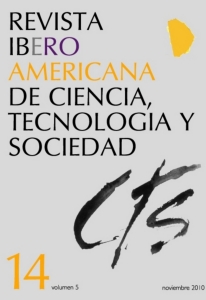Asynchrony, Modernization, and Industrialization
Suárez’s Hypothesis
DOI:
https://doi.org/10.52712/issn.1850-0013-834Keywords:
development, asynchrony, modernization, industrializationAbstract
In the early seventies, through his book The Argentine economists. The institutionalization of new professions, Francisco Suarez established a classification of societies based on two variables: the degree of modernization and its degree of industrialization, both of them taken as asynchronous aspects of the social transition process towards development. According to Germani, the notion of integration implies asynchrony. The different speeds of change would result in the coexistence of partial structures corresponding to different models of global structure (coexistence of partial modern and traditional structures). Such coexistence could be perceived differently depending on the view taken by the observer. What is judged as the disintegration of traditional societies could be taken as an upgrade from the standpoint of modern society. But what is a developed society? Why does everyone want to achieve development? Obviously, this article does not intend to answer these questions, or any in particular, but simply to review, from a nowadays point of view, the assumption about asynchrony between “modern” and «industrial» countries that Francisco Suarez displayed in his work.
Downloads
References
ALBORNOZ, M., LUCHILO, L., ARBER, G., BARRERE, R., y RAFFO, J. (2002): “El talento que se pierde. Aproximación al estudio de la emigración de profesionales, investigadores y tecnólogos argentinos”, Documento de Trabajo N° 4, Buenos Aires, Centro Redes. Disponible en: www.centroredes.org.ar.
CARDOZO, F. H. y FALETTO, E. (1969): Dependencia y desarrollo en América Latina, Buenos Aires, Siglo XXI.
DURÁN LIMA, J. y KUWAYAMA, M. (2003): “La calidad de la inserción internacional de América Latina y el Caribe en el comercio mundial”, Serie Comercio Internacional Nº 26, Santiago de Chile CEPAL, División de Comercio e Integración Regional.
GARCÍA CANCLINI, N. (1980): Culturas híbridas. Estrategias para entrar y salir de la modernidad, México, Ed. Grijalbo.
GARCÍA CANCLINI, N. (2000): “Noticias recientes sobre la Hibridación”, documento de libre circulación en Internet, puesto a disposición por el Centro de Documentación Virtual del Centro de Estudios Socioculturales (CESC).
GARRETÓN, M. A. (2001): “Cambios Sociales, actores y acción colectiva en América Latina”, Serie Políticas Sociales Nº 56, Santiago de Chile, CEPAL, División de Desarrollo Social.
GARRETÓN, M. A., CAVAROZZI, M., CLEAVES, P., GEREFFI, G., y HARTLYN, J.(2004): América Latina en el siglo XXI. Hacia una nueva matriz sociopolítica, Santiago de Chile, LOM Ediciones.
GERMANI, G. (1966): Política y Sociedad en una época de transición. De la sociedad tradicional a la sociedad de masas, Buenos Aires, Paidós.
PELLEGRINO, A. (2003): “Migración de mano de obra calificada desde Argentina y Uruguay”, Estudios sobre migraciones internacionales Nº 58, Programa de Migraciones Internacionales, Oficina Internacional del Trabajo.
PNUD (2004): La democracia en América Latina, Buenos Aires.
SECYT (2005): Bases para un plan estratégico de mediano plazo en ciencia,
tecnología e innovación, Ministerio de Educación, Ciencia y Tecnología.
SUÁREZ, F. (1973): Los economistas argentinos. El proceso de institucionalización de nuevas profesiones, Buenos Aires, Editorial Universitaria de Buenos Aires (EUDEBA).
Downloads
Published
How to Cite
Issue
Section
License
Copyright (c) 2025 CC Attribution 4.0

This work is licensed under a Creative Commons Attribution 4.0 International License.
All CTS's issues and academic articles are under a CC-BY license.
Since 2007, CTS has provided open and free access to all its contents, including the complete archive of its quarterly edition and the different products presented in its electronic platform. This decision is based on the belief that offering free access to published materials helps to build a greater and better exchange of knowledge.
In turn, for the quarterly edition, CTS allows institutional and thematic repositories, as well as personal web pages, to self-archive articles in their post-print or editorial version, immediately after the publication of the final version of each issue and under the condition that a link to the original source will be incorporated into the self-archive.











